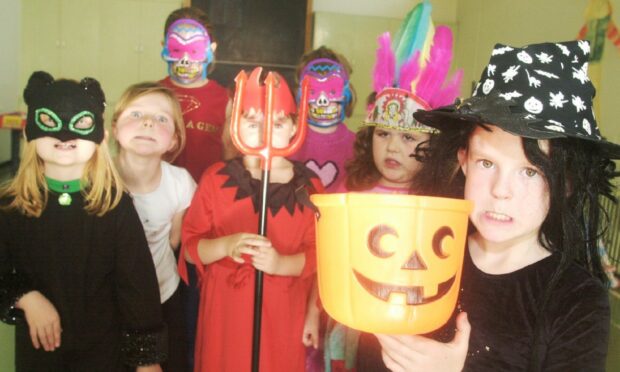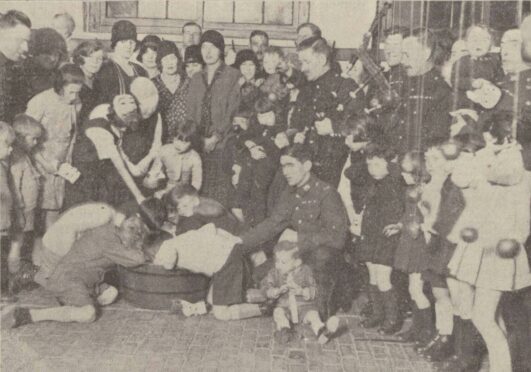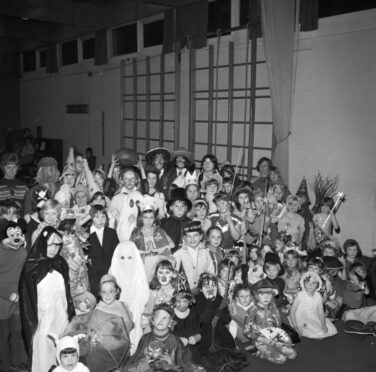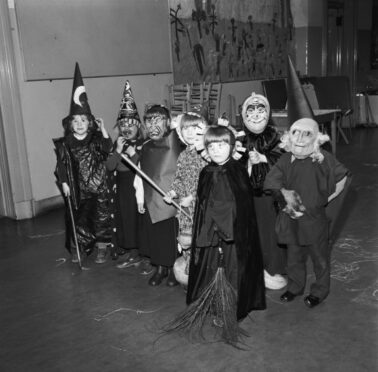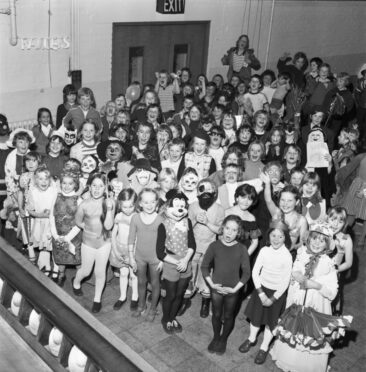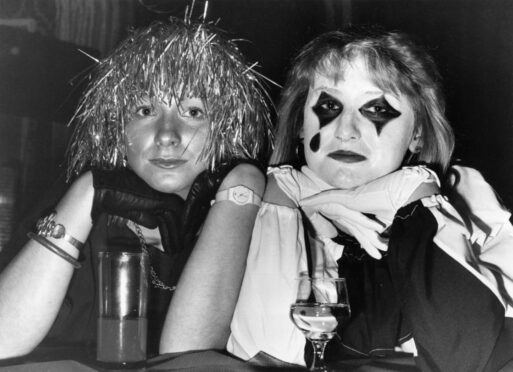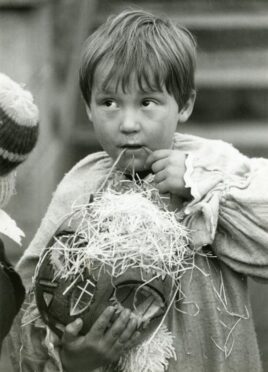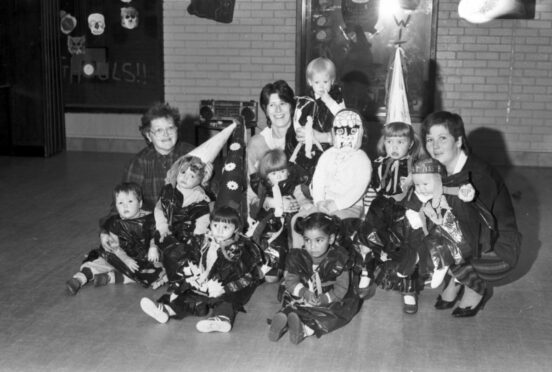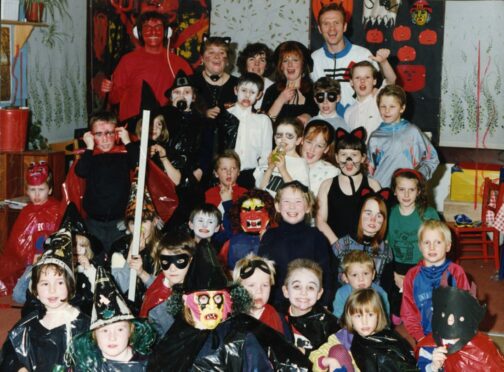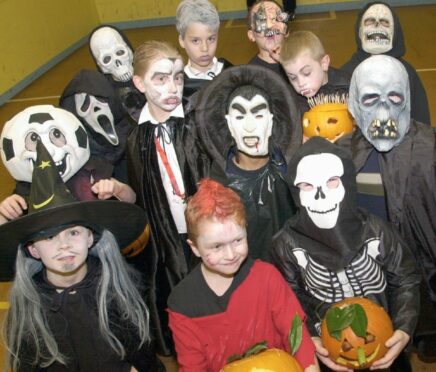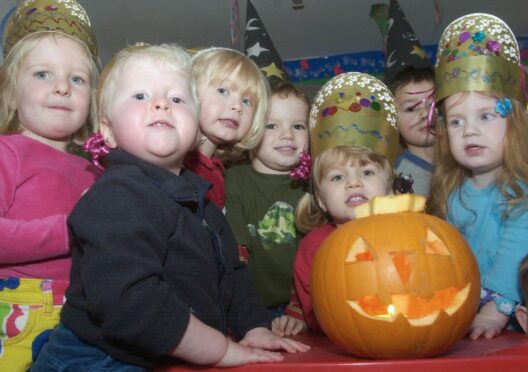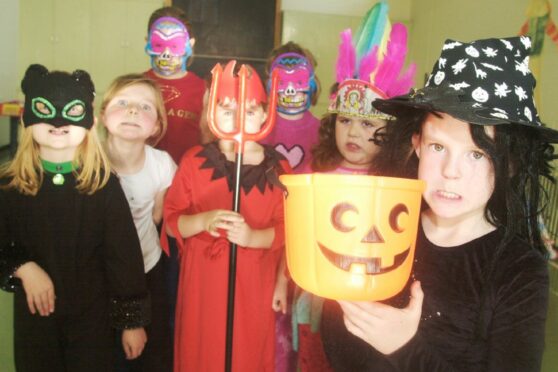Children across the north-east will already have their spooktacular costumes at the ready and pumpkins picked ahead of Halloween this weekend.
After the cancellation of last year’s festivities, many little ones will be enjoying fangtastic celebrations and a return to guising.
They’ll be following in the footsteps of kids throughout the decades who have donned their best homemade black binbag creations, witches hats and frightening face paint.
After all, Scotland is the true home of Halloween and its enduring traditions, but in the early 20th Century, Halloween fun and frivolity nearly died out altogether in Aberdeen.
Halloween has its roots in the ancient Pagan Celtic festival Samhain which started on the eve of October 31 to mark the end of harvest season and the start of winter.
Celebrations would continue through the night ending on November 1.
Bonfires would be lit and rituals carried out, with the belief that these had cleansing and protective properties.
It was thought the veil between the living and dead was at its thinnest on October 31.
Many believed the spirits of the dead would walk among the living, giving Halloween its supernatural beginnings.
Once the festivities were over, people would relight their hearth fires at home using the bonfire flames to bring protection over winter.
In later centuries, the Christian church marked All Hallows’ Eve on the final day of October ahead of All Hallows’ Day on November 1.
All Hallows’ Day became a hallowed – or holy – occasion to celebrate all saints who did not have their own day.
The folklore and superstition surrounding Halloween has long been recorded by writers and poets, one of the first poems on the subject was penned by Robert Burns.
His 1785 work ‘Halloween’ makes references to fairies, storytelling, pranks and dancing.
Burns’ poem reflected the evolution of Hallows’ Eve to the Halloween we’re more familiar with these days.
Connecting with the dear departed and warding off evil spirits was replaced with more light-hearted activities like fortune telling.
And in the 19th Century it was seen as a match-making opportunity for young women.
Mirror-gazing became a Hallows’ Eve tradition where people hoped to catch a glimpse of their future betrothed in the reflection.
One enduring tradition is that of dressing up. Initially people dressed up as the saints to be celebrated on All Saints’ Day.
But over time, young people instead dressed as spirits, believing they would be disguised among any true spirits walking in their midst.
Frightful fancy dress was soon embraced by pranksters who saw it as an opportunity for Halloween hijinks and playing tricks on neighbours.
Halloween celebrations took the form of dances in the villages of Aberdeenshire during the early 20th Century.
But the First World War impacted on the occasion in Aberdeen, and it was lamented the war “detered even the enthusiasts” from festivities.
Halloween fell on Sunday night in 1915 and custom had it in those days that it would be marked on the Saturday night instead, but that year it passed without observance.
The war had taken its toll, and a report in the Press and Journal stated “even in the country the festival has almost entirely died out”.
Festivities in Aberdeen were revived by the city’s Burns Club in the 1920s, when it was reported “it was about the only body in the city who were trying to bring back the old time celebration”.
By the 1930s, Halloween was very much back on the city’s social calendar.
In 1931, more than 1000 people attended a Halloween carnival ball at Aberdeen’s Beach Ballroom in fancy dress to raise funds for charity.
Old traditions and customs were observed, but novel new entertainment included a “bewitching cabaret”.
Halloween revelry continued during the Second World War in Aberdeen and the surrounding district, although rationing threatened some of the traditions.
After Halloween in 1944, it was reported that: “Apples were scarce, paper lanterns couldn’t be got, false faces were few and squibs – thank goodness! – were barely procurable.
“Still young Aberdeen was not beaten. The old-time turnip lantern, lit with half a candle, appeared in some profusion.
“Let the food authorities rage as they like at this waste of good vegetables, nobody will grudge these war-restricted youngsters their bit of fun.”
These days, there’s no rationing and certainly no shortage of fun – or supplies – as shops are bursting at the seams with Halloween goodies and creepy costumes.
And youngsters across the north-east – or more likely their parents – are spared the strife of trying to carve neeps, with pumpkins far more popular for making lanterns.
If you enjoyed this, you might like:
